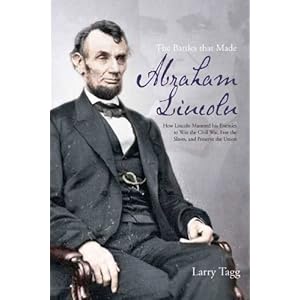 GBPA Announces Major Gettysburg 150th Event At Daniel Lady Farm, The Gettysburg Battlefield Preservation Association, Press Release, December 31, 2012.
GBPA Announces Major Gettysburg 150th Event At Daniel Lady Farm, The Gettysburg Battlefield Preservation Association, Press Release, December 31, 2012. The Gettysburg Battlefield Preservation Association today announced that a reenactment of the struggle of Southern surgeons, stewards and nurses to treat the scores of wounded soldiers of the Army of Northern Virginia brought to the Lady Farm will run from June 30 to July 7 at the farm. The Florida Regimental Medical Department (FRMD) is organizing the field hospital living history week War Meets Compassion: The Confederate Field Hospital during the Battle of Gettysburg sesquicentennial observance. There will be no admission charge to the event.
The restored barn on the Lady farm was used for treating enlisted personnel, while wounded officers were administered to in the nearby house. Forensically-verified bloodstains on the floor of the house show where wounded officers propped themselves against the wall as a surgeon worked nearby, blood-soaked clothing and rags accumulating in a corner of the room. The FRMD will be joined in the living history by three other active Confederate field hospital corps organizations and the local Pvt. John Wesley Culp Camp #1961 of the Sons of Confederate Veterans.
The 2nd Florida Volunteer Infantry will portray the march of the troops of generals Richard Ewell and Jubal Early to the site, bringing ambulatory wounded soldiers for treatment by surgeons and inhabiting the grounds where Confederate troops encamped in preparation for their assault on Culp's Hill.
The living history will be tailored to the convenience of visitors. Scheduled demonstrations will include triage of the wounded, amputations, brain surgery and treatment of diseases. Additional programs will focus on Civil War-era medicines, sanitary conditions, medical instrument identification, roles of purveyors and stewards, battlefield chaplains, embalming and the role of women in aiding the sick and wounded.
The overall commander for the event will be Major Robert Sonntag, Department of the Gulf. Sonntag, who actually worked in surgery, as a hospital administrator and now a medical consultant, will demonstrate on wounded soldiers how a good Civil War surgeon could perform a leg or arm amputation in 11 minutes. Other unit commanders will be Major Trevor T. Steinbach, Department of Tennessee; Major Harry Sonntag, Army of Northern Virginia; the 1 st Virginia Medical Unit; and Commander Gary Casteel of the Private John Wesley Culp Camp #1961, Sons of Confederate veterans.
The Lady Farm event is being coordinated with the official 150th anniversary activities of the Gettysburg Convention & Visitors Bureau and the Gettysburg National Military Park. "We are honored to be able to hold the largest ever Civil War medical re-enactment to the Daniel Lady Farm," said Robert Sonntag. "What could be better than staging our living history on an actual Confederate field hospital site as part of the 150th Anniversary of the Battle of Gettysburg?"
"This is the blossoming of the Daniel Lady Farm into what the Gettysburg Battlefield Preservation Association envisioned for the property when it was acquired 14 years ago," said GBPA Vice-President Jay Purdy. "With this presentation it will evolve from a restored static site where one must try to imagine what happened there in 1863. War Meets Compassion: The Confederate Field Hospital will transport visitors to the closest thing to having been there 150 years ago."
We also cannot over-emphasize how pleased the GBPA is with the cooperative relationship that has developed with the Military Park and the Convention and Visitors Bureau and we look forward to this relationship growing in the future.
Text Source: The Gettysburg Battlefield Preservation Association
Image Source: panoramio.com
























